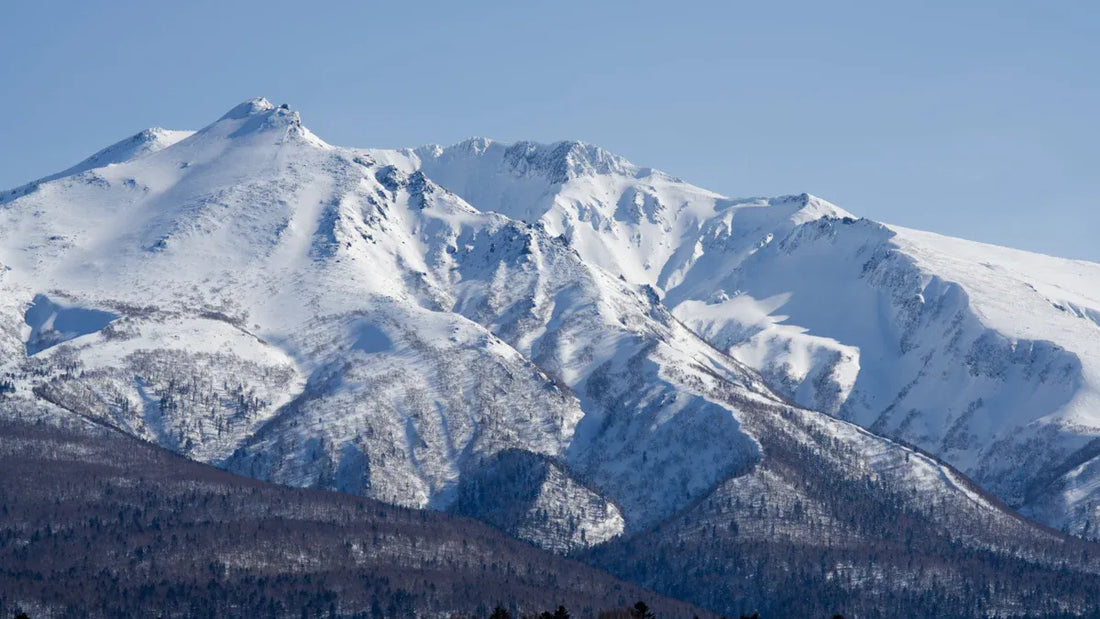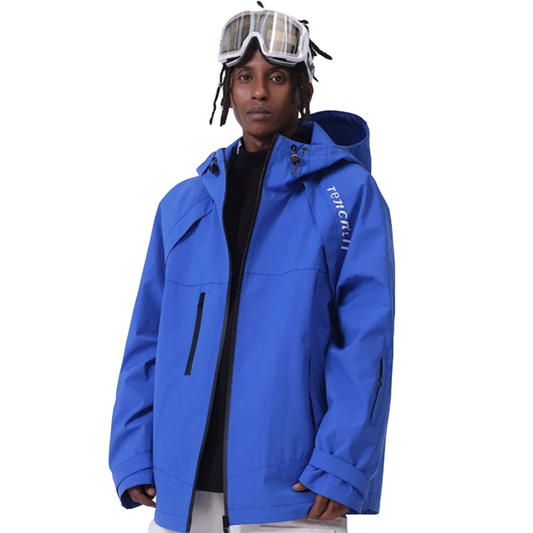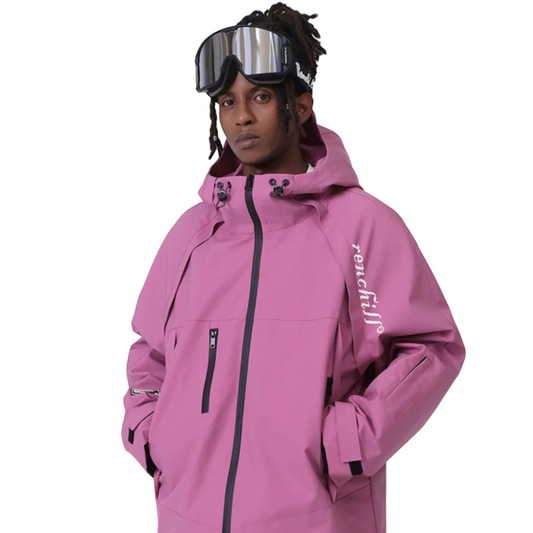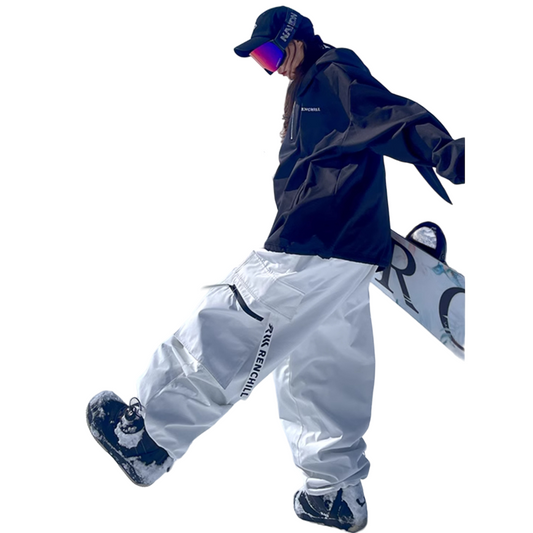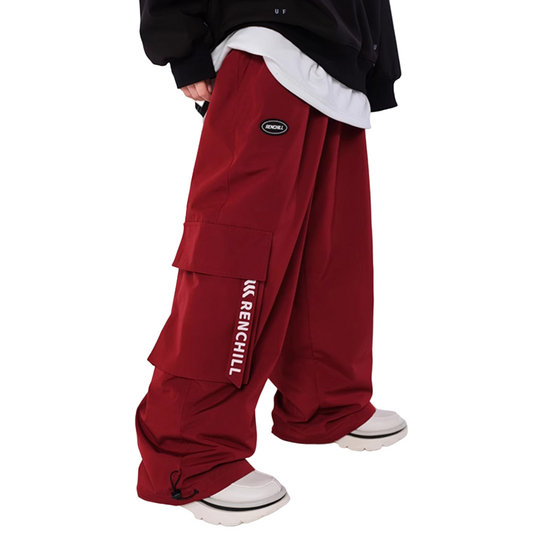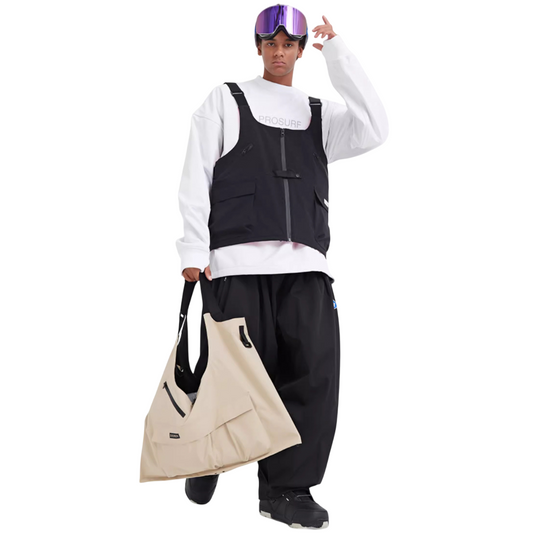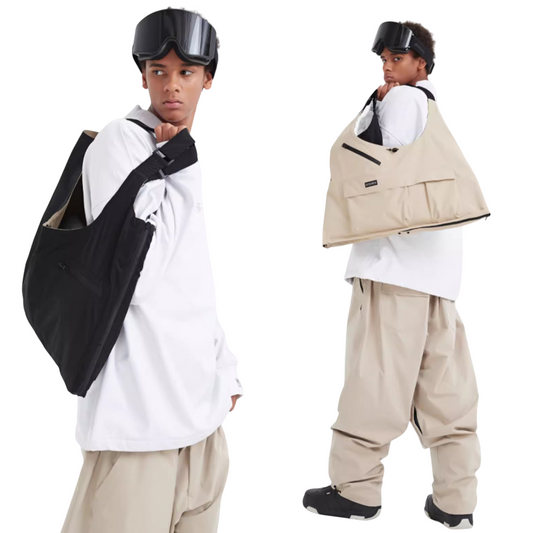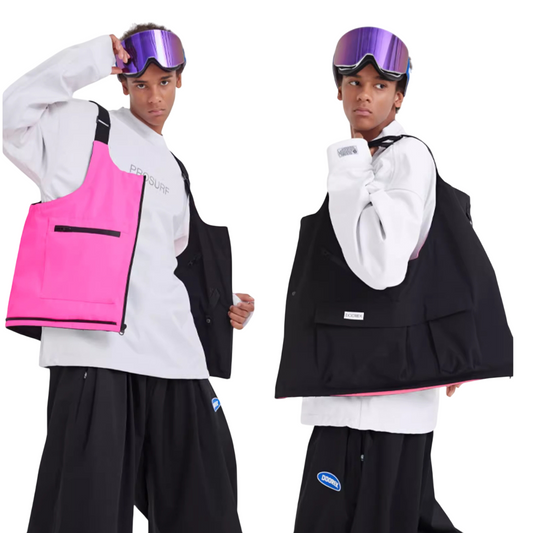Japan’s best ski resorts in Japan for 2025 are renowned for their legendary powder, diverse terrain, and unique cultural experiences.
|
Ski Resort |
Unique Feature |
|---|---|
|
Niseko |
Deep powder, global appeal |
|
Kiroro |
Quiet slopes, family fun |
|
Shiga Kogen |
Largest area, scenic views |
|
Happo One |
Olympic runs, vibrant nightlife |
|
Hakuba 47 & Goryu |
Night skiing, terrain parks |
|
Rusutsu |
Off-piste, relaxed vibe |
|
Furano |
Authentic culture, dry snow |
|
Sapporo Teine |
Steep trails, city access |
|
Tomamu |
Luxury, family activities |
|
Kagura |
Hidden gem, backcountry |
For the best ski resorts in Japan, you’ll want reliable gear. The SNOWMOCACA Snow Suit keeps you warm and stylish on the slopes. Enjoy FREE SHIPPING on all orders over $99. 🎿❄️
Key Takeaways
- Japan offers world-class ski resorts with legendary powder snow, rich culture, and easy mountain access, making it a top skiing destination.
- Choose your ski resort based on your needs: powder lovers prefer Hokkaido, families enjoy resorts with gentle slopes and onsens, and nightlife seekers find lively scenes in Niseko and Hakuba.
- Pack the right gear like waterproof snow suits, warm layers, and safety equipment to stay comfortable and safe; SNOWMOCACA offers stylish, high-quality options for all sizes.
Why Japan for Skiing
Japan stands out as a top destination for skiing because you get more than just great slopes. You find legendary powder, rich culture, and easy access to the mountains. The ski season in Japan runs from late November to early April, but the best time for world-class powder skiing is mid-January to mid-March. During this period, you can expect deep powder and high-quality powder almost every day.
Powder Snow
You will discover that Japan’s legendary powder snow is famous worldwide. Cold Siberian winds pick up moisture over the Sea of Japan, creating light, dry, and fluffy powder that falls steadily throughout the ski season. Resorts like Niseko and Kiroro often see deep powder, with snowpack depths over 12 feet during peak season. This high-quality powder makes powder skiing and snowboarding in Japan a dream for many. The mountain terrain stays fresh, and you rarely find icy or slushy conditions. If you want a powder-chasing trip, Japan offers some of the best powder skiing on the planet.
Culture & Onsen
Your skiing experience in Japan goes beyond the mountain. After a long day on the slopes, you can relax in a traditional onsen. Bathing in natural hot springs is a unique part of the Japanese ski experience. In places like Nozawa Onsen, you enjoy centuries-old traditions, local foods, and warm hospitality. The après-ski scene includes “Kampai” moments and a deep connection to Japanese culture, making your ski season memorable.
Accessibility
Japan makes it easy for you to reach the mountains. Improved air connectivity and digital payment options help international visitors travel smoothly. Most top resorts sit close to major cities, so you can combine your ski season with urban adventures. The mountain resorts welcome you with safety, comfort, and legendary powder, ensuring a seamless skiing experience from start to finish.
SNOWMOCACA Snow Suit & Ski Trip Outfits
Features & Benefits
You want a snow suit that keeps you warm, dry, and stylish on the slopes. The SNOWMOCACA Snow Suit offers waterproof protection and excellent insulation, so you stay comfortable in any weather. You can choose from a wide range of options, including a snow set, 2 piece ski suit, women's ski suit two piece, men's ski suit two piece, and even plus size snow suit designs. Each snow suit set uses high-quality materials that block wind and snow. You get adjustable hoods, secure pockets, and reinforced seams for extra durability. SNOWMOCACA also offers waterproof snowsuits womens, ski jackets women, and ski jacket mens, so everyone finds the right fit for their ski trip outfits.
Tip: Orders over $99 qualify for FREE SHIPPING, making it easy to upgrade your gear before your next adventure.
Choosing Your Snow Suit
You should think about your needs before picking a snow suit. If you want flexibility, a two piece snowsuit or 2 piece snowsuit gives you more movement and layering options. For extra warmth, a one piece womens snowsuit or ski suit set works well. Girls snow suits and best youth ski jackets keep younger skiers cozy and safe. If you love vintage ski jacket or retro ski jacket styles, SNOWMOCACA has options that blend classic looks with modern performance. Wondering what to wear under ski jacket layers? Choose moisture-wicking base layers for comfort.
Trending Styles
- Pastel and bright colors like mint green, light pink, lime yellow, and aubergine
- Geometric patterns, animal prints (especially leopard), and stripes
- Retro-inspired designs from the '70s, '80s, and '90s with oversized jackets and neon accents
- Bomber-style tops with tight or wide-leg pants, high-waisted ski pants, and stretch materials
- Baggy fits, longer jackets in the back, and bold prints
- Accessories such as touchscreen gloves, helmets, and warm hats complete your look
You can find many of these trends in the latest SNOWMOCACA collection, so you look great and feel confident on the mountain.
Best Ski Resorts in Japan: Top Picks

Japan offers some of the best ski resorts in the world. You can find deep powder, unique culture, and a variety of mountain experiences. Here are the top 10 best ski resorts in Japan for 2025. Each resort gives you a different skiing experience, from the bottomless Japanese powder of Hokkaido to the authentic Japanese ski town vibes in Nagano and Tohoku.
Niseko United
Niseko United sits on Hokkaido, Japan’s northernmost island. You get four interconnected resorts: Grand Hirafu, Hanazono, Niseko Village, and Annupuri. Niseko is famous for its deep powder, with an average annual snowfall of about 15 meters. The mountain terrain covers all skill levels, with open bowls, tree runs, and a lively après-ski scene.
|
Feature |
Details |
|---|---|
|
Location |
Hokkaido |
|
Trails/Runs |
61 |
|
Lifts |
30+ |
|
Average Annual Snowfall |
15 meters (49 feet) |
|
Elevation |
1,308 meters (top) |
You will love the powder zone here. Niseko’s snow is light and dry, perfect for both skiing and snowboarding in Japan. The resort offers night skiing, so you can enjoy the mountain after sunset. The area has many international visitors, so you can find English-speaking staff and a wide range of food options. Niseko is best for powder chasers, families, and anyone seeking a lively mountain village.
Tip: Book early for peak season, as Niseko is one of the most popular best ski resorts in Japan.
Hakuba Valley
Hakuba Valley lies in Nagano, surrounded by the Japanese Alps. You can reach it in about three hours from Tokyo. The valley includes 10 resorts, such as Happo One, Hakuba 47, Goryu, Tsugaike, and Cortina. Hakuba hosted the 1998 Winter Olympics, and you still feel that energy today.
|
Resort |
Runs |
Area (ha) |
Difficulty (B/I/A) |
Lifts |
Unique Highlights |
|---|---|---|---|---|---|
|
Happo One |
16 |
220 |
30/50/20 |
22 |
Olympic runs, village, glamping |
|
Hakuba Goryu |
17 |
120 |
35/40/25 |
11 |
Night skiing |
|
Hakuba 47 |
8 |
32 |
30/40/30 |
6 |
Long season, tree skiing |
|
Tsugaike |
14 |
196 |
50/30/20 |
13 |
Wide beginner slopes |
|
Cortina |
16 |
50 |
40/30/30 |
6 |
Deep powder, tree skiing |
Hakuba Valley gets over 11 meters of snowfall each year. You find the largest ski area in Hakuba Valley at Happo One. The mountain terrain suits all levels, with long runs and off-piste powder. You can enjoy après-ski onsens, local food, and a mix of Western and Japanese culture. Hakuba is best for groups, families, and those who want a true Japanese ski experience.

Rusutsu Resort
Rusutsu Resort stands out in Hokkaido for its deep powder and tree skiing. You get 37 runs across three mountains: West, East, and Mt. Isola. The average annual snowfall reaches 13 meters. Rusutsu encourages tree skiing, which is rare in Japan. The mountain offers wide, uncrowded slopes and a relaxed vibe.
|
Feature |
Details |
|---|---|
|
Location |
Hokkaido |
|
Trails/Runs |
37 |
|
Lifts |
18 |
|
Average Annual Snowfall |
13 meters (43 feet) |
|
Elevation |
994 meters (top) |
You can enjoy an indoor amusement park, a monorail, and unique dining options. The resort is family-friendly and has English-speaking staff. Rusutsu is best for powder lovers, families, and those who want a fun, all-in-one mountain resort.
Kiroro Resort
Kiroro Resort, also in Hokkaido, is one of the snowiest and best ski resorts in Japan. You get about 21 meters of powder each season. The mountain has 23 runs for all levels and a modern lift system with 10 high-speed lifts. The ski season lasts from November to May, giving you a long window for skiing.
|
Feature |
Details |
|---|---|
|
Location |
Hokkaido |
|
Trails/Runs |
23 |
|
Lifts |
10 high-speed lifts |
|
Average Annual Snowfall |
21 meters (69 feet) |
|
Elevation |
1,180 meters (top) |
You can try night skiing, snowshoeing, snow fat biking, and snowmobiling. The resort offers luxury ski-in/ski-out condos and easy access to onsens. Kiroro is best for powder seekers, families, and those who want a quiet, high-quality mountain experience.
Shiga Kogen
Shiga Kogen is one of the largest interconnected ski areas in Japan. You find it in Nagano, with 18 resorts linked by lifts and trails. The mountain terrain covers over 600 hectares, with 80 kilometers of runs. Shiga Kogen gets about 10 meters of snowfall each season.
|
Feature |
Details |
|---|---|
|
Location |
Nagano |
|
Trails/Runs |
80 km (trails connect 18 resorts) |
|
Lifts |
48 (including 5 gondolas) |
|
Average Annual Snowfall |
10 meters (33 feet) |
|
Elevation |
Up to 2,307 meters |
You can explore gentle beginner slopes, long intermediate runs, and advanced powder zones. The area feels quiet and authentic, with fewer crowds than other best ski resorts in Japan. Shiga Kogen is best for families, intermediates, and those who want a relaxed Japanese mountain experience.
Nozawa Onsen
Nozawa Onsen combines great skiing with a historic village. You find it in Nagano, known for its 13 public onsens and the famous Dosojin Fire Festival. The mountain offers 36 trails and over 50 kilometers of runs. The average annual snowfall is about 12 meters.
|
Feature |
Details |
|---|---|
|
Location |
Nagano |
|
Trails/Runs |
36 |
|
Lifts |
25 |
|
Average Annual Snowfall |
12 meters (39 feet) |
|
Elevation |
1,650 meters (top) |
You can ski long runs, enjoy powder, and relax in hot springs after a day on the mountain. The village has narrow streets, traditional inns, and local food. Nozawa Onsen is best for families, culture lovers, and anyone seeking an authentic Japanese ski town.
Furano
Furano sits in central Hokkaido. You get two main zones: Furano and Kitanomine. The mountain receives 8 to 9 meters of powder each year. The terrain splits into 40% beginner, 40% intermediate, and 20% advanced. Furano is famous for its fluffy snow and steep vertical drop of over 950 meters.
|
Aspect |
Details |
|---|---|
|
Snowfall Average |
8 to 9 meters (26–30 feet) |
|
Terrain Difficulty |
40% beginner, 40% intermediate, 20% advanced |
|
Vertical Drop |
Over 950 meters |
|
Night Skiing |
Available |
You can enjoy night skiing and easy access to nearby resorts. Furano is best for families, intermediates, and those who want a quieter Hokkaido mountain experience.

Myoko Kogen
Myoko Kogen, in Niigata near Tohoku, is a classic Japanese mountain destination. You get several resorts across different mountains, with an average annual snowfall of 14 meters. The area offers powder, tree runs, and a long ski season from December to April.
- Multiple resorts with diverse terrain for all levels
- Average annual snowfall: 14 meters (46 feet)
- Easy access from Tokyo by train
- Traditional onsen, local festivals, and regional cuisine
- New luxury developments and improved infrastructure
You can enjoy ski-in/ski-out hotels, authentic Japanese culture, and fewer crowds. Myoko Kogen is best for powder chasers, families, and those who want a blend of tradition and modern comfort.
Appi Kogen
Appi Kogen is in the Tohoku region, about 3.5 hours from Tokyo. The mountain covers 282 hectares and rises to 1,328 meters. You get 7 lifts and an average of 8 meters of dry powder snow each season. The terrain splits into 30% beginner, 40% intermediate, and 30% expert.
|
Feature |
Details |
|---|---|
|
Location |
Tohoku |
|
Size |
282 hectares |
|
Elevation |
1,328 meters |
|
Snow Conditions |
8 meters of dry powder |
|
Terrain |
30% Beginner / 40% Intermediate / 30% Expert |
|
Lifts |
7 |
You can find English-speaking instructors, modern rental shops, and new activities like E-Bike rides and Sled Park. Appi Kogen is best for families, intermediates, and those looking for a modern Tohoku mountain resort.
Zao Onsen
Zao Onsen, in Tohoku, is famous for its snow monsters and hot springs. The mountain terrain offers 40% beginner, 40% intermediate, and 20% advanced slopes. The longest run stretches about 10 kilometers. You get over 30 lifts, including gondolas and ropeways. The ski season runs from December to May.
- Traditional onsen village with dozens of hot springs
- High sulfur content in the water, known for its health benefits
- Famous “snow monsters” (juhyo) near the summit
- Long runs and good snow for all skill levels
You can relax in public bathhouses or private ryokan onsens after skiing. Zao Onsen is best for families, beginners, and anyone who wants a true Japanese mountain and onsen experience.
Note: Each of these best ski resorts in Japan offers something unique. You can chase deep powder, explore authentic Japanese ski towns, and enjoy the best of Hokkaido, Nagano, and Tohoku. Whether you want a lively village, quiet slopes, or a cultural adventure, you will find your perfect mountain in Japan.
How to Choose the Best Ski Resort
Choosing the right ski resort in Japan depends on your priorities. You want to match your skiing style and travel needs with the best mountain for you. Use the table below to compare regions and their features:
|
Factor |
Hokkaido (Niseko, Rusutsu, Furano) |
Nagano (Hakuba, Nozawa, Shiga Kogen) |
Niigata (Naeba, Gala Yuzawa) |
North-East (Appi Kogen, Zao Onsen) |
|---|---|---|---|---|
|
Powder Quality |
Best, light, dry, deep |
Good, less than Hokkaido |
Good, shorter season |
Excellent, backcountry options |
|
Accessibility |
Buses from Sapporo |
Bullet train from Tokyo |
Near train stations |
Harder to access |
|
Language |
English widely spoken |
Moderate English |
Less English |
Limited English |
|
Family-Friendly |
Niseko, Rusutsu, Tomamu |
Hakuba, Nozawa, Shiga Kogen |
Beginner/intermediate |
Appi Kogen |
|
Nightlife |
Niseko vibrant |
Hakuba lively |
Traditional |
Quiet |
Family-Friendly
If you travel with family, look for resorts with gentle slopes, ski schools, and childcare. Niseko offers English-speaking instructors, play areas, and family restaurants. Hakuba Valley has group and private lessons for kids, plus easy access from Tokyo. Nozawa Onsen and Shiga Kogen provide safe, quiet mountain areas with beginner runs. Appi Kogen features well-groomed slopes and lessons for children.
Tip: Resorts with onsen and play zones help keep everyone happy after a day of skiing.
Powder & Off-Piste
You may want deep powder and off-piste adventure. Hokkaido’s mountains, like Niseko and Furano, deliver some of the world’s driest, deepest powder. Hakuba Valley stands out for big mountain terrain, steep tree skiing, and backcountry tours. Both regions offer guided trips for advanced skiers who chase fresh powder.
Nightlife
If you enjoy après-ski, choose a resort with lively nightlife. Niseko has bars, live music, and late-night venues. Hakuba features on-snow parties, DJ sets, and cozy bistros. You find mountain restaurants and clubs for relaxing or celebrating after skiing.
Onsen & Relaxation
After skiing, you can soak in a hot spring. Nozawa Onsen is famous for its historic public baths and traditional village. Hakuba Valley and Zao Onsen also offer authentic onsen experiences. These mountain resorts let you unwind and enjoy Japanese culture.
Accessibility
Easy access saves you time. Hakuba Valley connects to Tokyo by bullet train, making it the most accessible for international travelers. Hokkaido resorts like Niseko and Rusutsu are close to Sapporo airport, with direct buses. Choose ski hub cities for quick trips to multiple mountain resorts.
Accommodation & Local Experiences

Ski-In/Ski-Out Hotels
You can make your ski trip in Japan more convenient by staying at ski-in/ski-out hotels. These hotels let you step outside and start skiing right away. Many top mountain resorts offer this option. For example:
- Sheraton Hokkaido Kiroro Resort and Yu Kiroro at Kiroro Ski Resort give you direct access to the slopes and modern amenities.
- Rusutsu Resort Hotel and Westin Resort Hotel in Rusutsu provide easy mountain access and comfortable rooms.
- Naeba Prince Hotel sits right at the base of the mountain, making it simple to enjoy fresh powder each morning.
The table below shows popular accommodation types at major ski resorts:
|
Ski Resort |
Accommodation Types |
Ski-In/Ski-Out Examples |
|---|---|---|
|
Niseko |
Hotels, apartments, lodges |
Ski-in/ski-out hotels, resort homes |
|
Hakuba |
Lodges, cottages, hotels |
Hotels at Happo-One, Echoland village |
|
Furano |
Hotels, pensions, chalets |
Ski-in/ski-out hotels |
Ryokan & Onsen
You can experience traditional Japanese hospitality by staying in a ryokan. These inns often feature tatami floors, futon bedding, and local cuisine. Many ryokans near mountain resorts include onsen, or natural hot spring baths. After a day on the mountain, you can relax your muscles in soothing mineral water. Sounkyo Onsen near Daisetsuzan Sounkyo Kurodake Ski Resort and Asahidake Onsen near Asahidake Ski Resort both offer authentic ryokan stays with easy access to the slopes.
Tip: Ryokans with onsen baths give you a unique way to unwind after chasing powder on the mountain.
Local Food
You can taste the flavors of the region at every mountain resort. Try these must-eat dishes:
- Doxon Curry in Furano, known for smoked meat and a secret recipe.
- Sanzoku Nabe hot pot at Kumagera Restaurant, featuring duck and venison.
- Yakiniku, where you grill high-quality meat at your table.
- Tonkatsu, a hearty breaded pork cutlet, is perfect after a day on the mountain.
- Fresh sushi from Otaru, including uni and salmon.
- Soba noodles, a healthy and filling meal served in historic settings.
You will find that local food adds to your mountain adventure and helps you recover after exploring the slopes.
Packing & Gear Tips for Japan
Must-Have Outfits
You want to stay warm, dry, and safe on the slopes. Packing the right gear makes your ski trip in Japan much more enjoyable. Here are the essentials you should bring:
- Big powder skis (at least 115mm underfoot) for Japan’s deep snow.
- Neck gaiter to shield your face from the cold and powder.
- Low-light goggle lenses for better visibility in cloudy or snowy weather.
- Warm helmet with a built-in liner and MIPS technology for safety.
- Waterproof jacket and pants, such as the SNOWMOCACA Snow Suit, to keep you dry.
- Insulated, waterproof gloves or mitts to protect your hands.
- Wool or fleece mid layers for warmth, even when wet.
- GoPro camera to capture your best runs.
- Mid-size backpack (about 40L) for carrying gear.
- Backcountry safety gear: beacon, probe, and shovel.
- Avalanche safety training and a reliable ski partner for off-piste adventures.
Tip: Choose a snow set or ski suit set that matches your style and fits well. SNOWMOCACA offers options for men, women, and plus sizes.
2 Piece vs. One Piece Suits
You can pick between a 2 piece ski suit or a one piece womens snowsuit. Two piece snowsuits give you flexibility and make layering easy. One piece suits offer maximum warmth and block out snow. Girls snow suits and best youth ski jackets often come in both styles. Think about your comfort and how often you want to adjust layers during the day.
|
Suit Type |
Pros |
Best For |
|---|---|---|
|
2 Piece |
Flexible, easy layering |
Changing weather |
|
1 Piece |
Warmer, no snow entry |
Deep powder days |
Waterproof & Vintage Styles
You need waterproof snowsuits womens or ski jackets for men to stay dry in Japan’s wet snow. Look for features like sealed seams and water-resistant zippers. Vintage ski jackets and retro ski jacket styles add flair to your outfit. SNOWMOCACA’s collection includes both modern and retro designs, so you can express your personality while staying protected.
More from SNOWMOCACA Blog
Best Ski Resorts for Beginners
You may want to start your skiing journey at a beginner-friendly resort. SNOWMOCACA has a helpful guide on Best Ski Resorts for Beginners in Japan. This post explains which resorts offer gentle slopes, easy lessons, and safe areas for new skiers. You can learn how to pick the right mountain and what to expect on your first day. Resorts with soft powder make learning easier and more fun.
Planning Your First Japan Ski Trip
Planning a ski trip to Japan can feel overwhelming. SNOWMOCACA’s Planning Your First Japan Ski Trip post gives you step-by-step advice. You will find tips on booking flights, choosing the best time for skiing, and packing the right gear. The guide also covers how to use trains and buses to reach the mountains. You can feel confident as you prepare for your adventure.
Après-Ski Activities
Skiing is only part of the fun. After a day on the slopes, you can enjoy many après-ski activities. SNOWMOCACA’s Après-Ski Activities in Japan post shares ideas for relaxing in an onsen, tasting local food, and exploring mountain villages. You will discover how to make the most of your trip, both on and off the snow.
Tip: Check out these blog posts for more expert advice and inspiration for your next powder adventure!
You now know the top 10 ski resorts in Japan and what makes each one special. Start planning your 2025 adventure. Try the SNOWMOCACA Snow Suit for comfort and style. Free shipping applies to orders over $99. Explore more guides on the SNOWMOCACA blog for a smooth trip. 🏂✨
FAQ
What is the best month to ski in Japan?
You find the best powder from mid-January to mid-March—snowfall peaks during these months. Resorts stay less crowded in early January and late March.
How do you choose the right SNOWMOCACA snow suit size?
You should check the SNOWMOCACA size chart. Measure your chest, waist, and hips. Compare your numbers to the chart for the best fit.
Tip: If you want a looser fit for layering, size up.
Can you rent ski gear at Japanese resorts?
Most major resorts offer rental shops. You can rent skis, snowboards, boots, and helmets. Some places also rent SNOWMOCACA snow suits and jackets.

